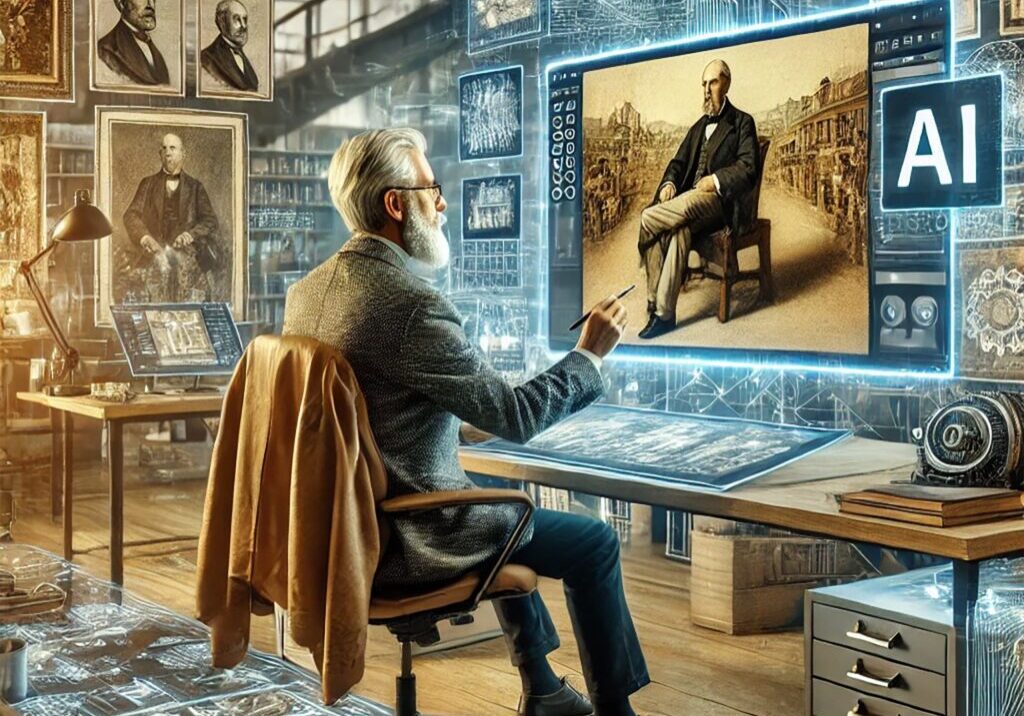
Revolution in Rouge: John Singleton Copley and the Power of Detail
Before the rifles fired or the flags waved, rebellion wore rouge and satin. In the quiet Boston parlors of the 1760s, John Singleton Copley was painting the colonial elite with such care that you could count the threads in their cuffs. He gave weight to pearls, precision to lace, and light to cheekbones in a way that didn’t just flatter – it recorded a world on the verge of rupture.
As I painted figures into the mural’s Unity section, I returned again and again to Copley – not for his politics, but for his honesty with surface. His revolution was quiet, detailed, and already underway. Copley’s early portraits have a stillness that’s almost cinematic. Sitters like Paul Revere, Mercy Otis Warren, and Samuel Adams appear composed and contained, but if you look closely, the tension is there. Revere’s hands rest on a teapot in one of Copley’s most famous portraits – not a sword, not a scroll, but a silversmith’s tool. The portrait tells you what he does, not yet what he will do. And that’s the genius of Copley: he captured people at the edge of history, not the center of myth.
From an artist’s perspective, Copley’s technical skill is astonishing. He painted fabric as if it breathed. His brushwork on velvet sleeves, powdered wigs, and polished wood is exacting without being stiff. In the mural, when I paint a seated figure in deep red, or a lace cuff catching torchlight, I think of Copley. Not to mimic, but to learn. To remember that every crease tells a story. Every shadow holds pressure. Copley didn’t use his brush to dramatize. He used it to observe. What fascinates me most is how Copley’s portraits began to shift in tone as the colonies moved toward rebellion. There’s a subtle recalibration in his compositions – less background opulence, more psychological focus.
He began to paint quieter expressions, more upright poses, and simpler color fields. You can feel the political climate changing even in the fabric. The revolution crept into his palette before it arrived in the street. When I paint figures for the mural, I try to honor that approach. Even in scenes of action, the details matter. The way a sash falls across a chest. The way a boot touches the ground. These aren’t just decorations. They’re visual records.
Copley taught me that attention to detail isn’t a distraction – it’s how history enters the frame. His use of red is particularly striking. Whether it’s a coat, a ribbon, or a chair, Copley places red like punctuation. It draws the eye but never overwhelms. In one portrait, a crimson sash breaks the symmetry of a dark suit and becomes a kind of silent alarm. In another, a ruby ring sits on an otherwise modest hand. These moments don’t shout. They suggest. And that’s something I’ve tried to echo in the mural. A red thread in a child’s bonnet. A single bright ribbon tied around a protestor’s wrist. It’s the rouge of rebellion. Copley eventually left America, uneasy with the Revolution’s pace and volatility. He settled in London, painting aristocrats and mythic scenes. But his American work remains the most vivid.
Because in it, you see people poised on a precipice. Their wigs are powdered, but their expressions are restless. Their garments gleam, but their gaze flickers toward something unseen. That contradiction – order facing upheaval – is exactly what I tried to capture in Unity’s quieter figures. Revolution doesn’t always arrive with noise. Sometimes it tiptoes in, trailing brocade and perfume, eyes forward, fists just out of view. Copley painted that moment. And every time I mix a glaze or highlight a fold, I thank him for showing me that detail is not just design. It’s destiny.

